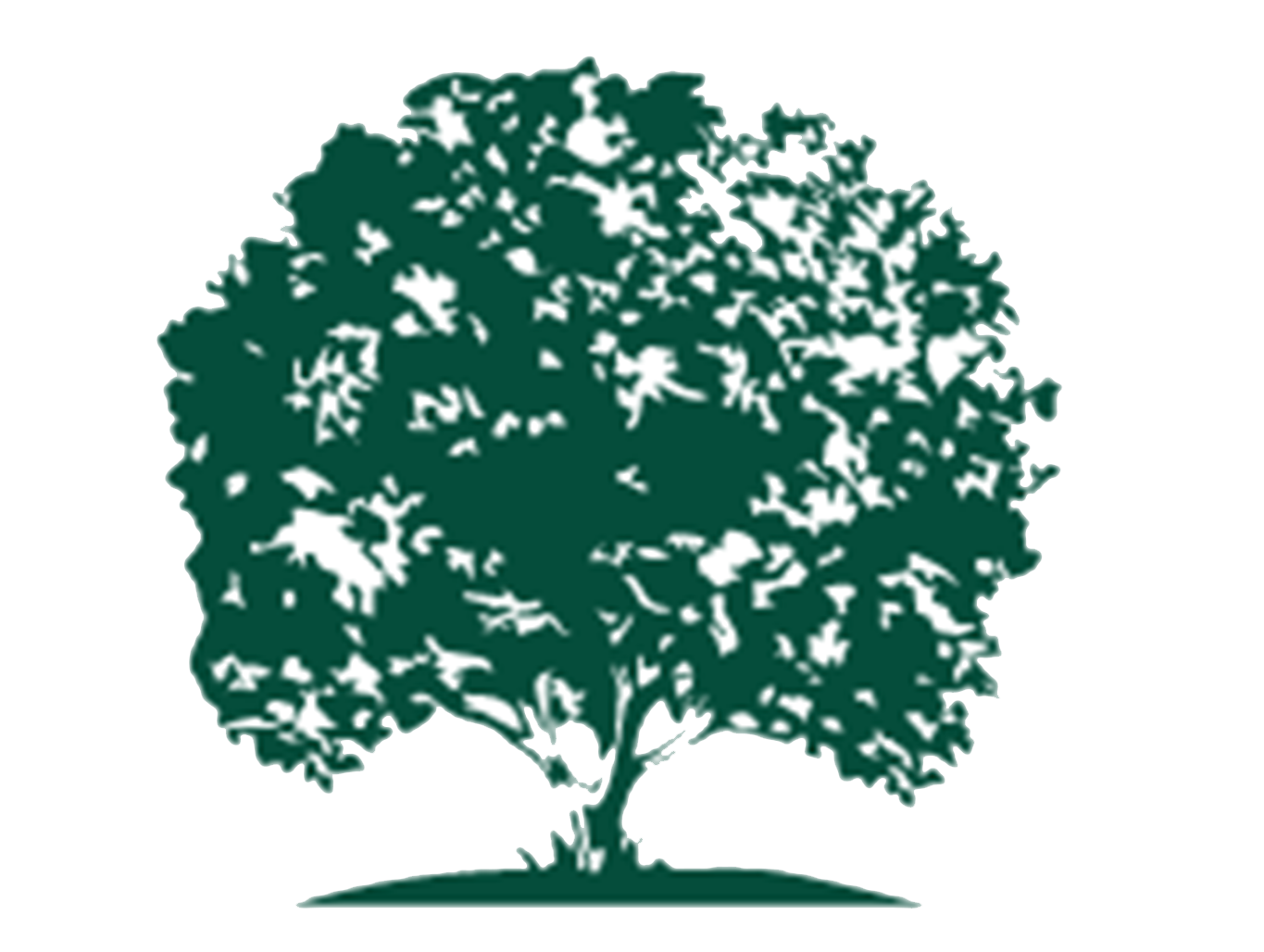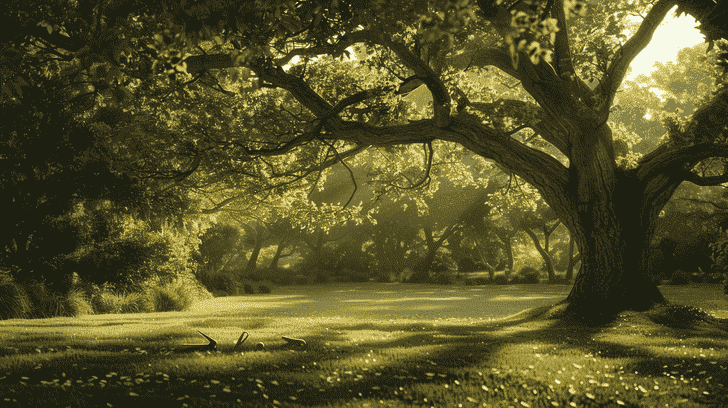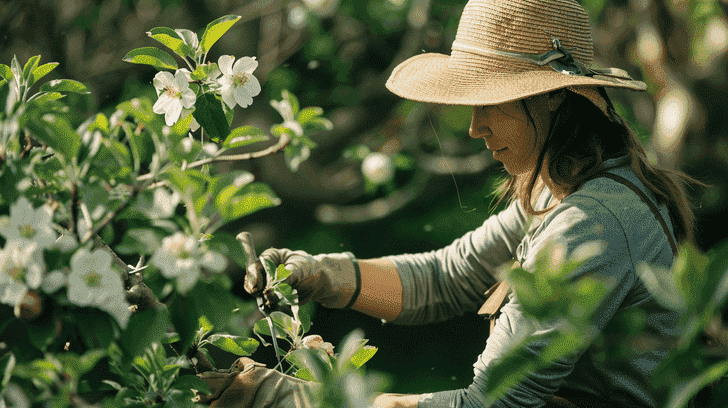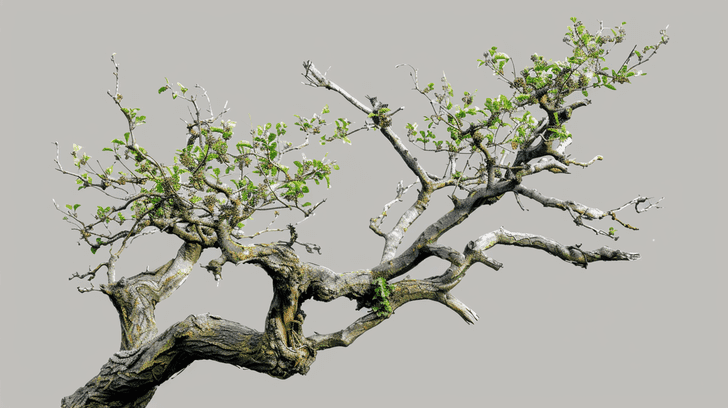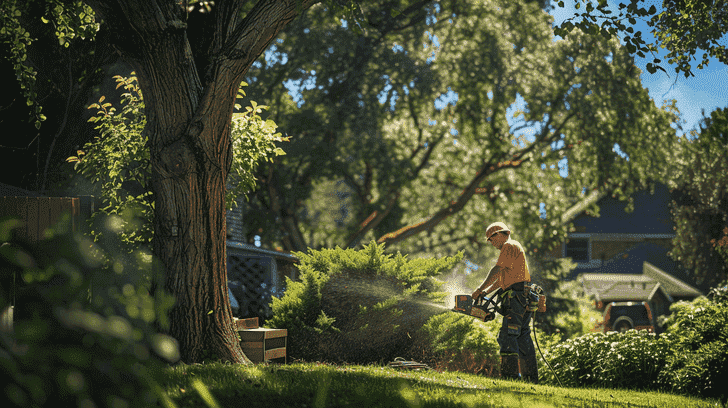How To Prune Trees: Essential Tips
Pruning your trees regularly is essential for maintaining their health, beauty, and safety.
Proper pruning techniques encourage healthy growth, improve the tree’s structure, and allow for better light and air penetration into the canopy.
However, improper pruning cuts can weaken the tree and leave it susceptible to disease and pests. Understanding the correct techniques and timing for pruning your trees will ensure they thrive for years to come.
According to a comprehensive study by the Research Foundation on Tree Pruning, it was revealed that incorrect pruning practices can lead to long-term damage, affecting the overall health and stability of trees.
In this article, we delve into the art and science of tree pruning, exploring key principles, techniques, and considerations to help you effectively care for your trees.
When to Prune Trees
The ideal time to prune most trees is during their dormant season, typically between late fall and early spring.
This allows the tree to focus its energy on healing the pruning wounds before the stress of new growth in the spring. However, some exceptions exist.
Evergreens can be pruned throughout the year while flowering trees benefit from pruning just after they finish blooming.
The maturity of the tree also plays a role in pruning timing. Young trees benefit from formative pruning during their first few years to establish a strong structure.
Mature trees typically require maintenance pruning to remove dead, diseased, or overcrowded branches.
The specific reason for pruning will influence timing. Dead or diseased branches can be removed any time of year, while pruning for air circulation or shaping the tree is best done during the dormant season.
Preparing to Prune
Safety is paramount when pruning trees. Always wear protective gear like gloves, eye protection, and long pants and sleeves to shield yourself from falling debris and sharp tools.
The tools you’ll need depend on the size of the branches you’ll be pruning. Hand pruners are ideal for branches less than 1 inch in diameter, while loppers tackle branches up to 2 inches.
For larger branches, a pruning saw or chainsaw might be necessary.
Regardless of the tool, ensure it’s sharp and clean to make precise cuts and minimize damage to the tree.
Sterilizing your tools with rubbing alcohol before and after each use helps prevent the spread of disease between trees.
Pruning Techniques
Making the proper pruning cuts is crucial for the health of your tree. It’s important to identify the branch collar, the swollen area at the base of the branch where it joins the trunk.
Locate the branch bark ridge, a raised area on the upper side of the branch collar that runs along the branch.
Your pruning cut should be made just outside the branch collar, angled downwards and away from the stem at roughly a 45-degree angle. This angled cut promotes proper healing and prevents water from pooling around the wound.
There are three main types of pruning cuts, each with a specific purpose. Thinning cuts remove entire branches to improve air circulation and light penetration within the canopy.
Heading cuts shorten branches to control growth or encourage branching lower down. Reduction cuts remove large limbs to reduce the overall size or weight of the tree.
For large branches exceeding 2 inches in diameter, a three-cut method is recommended to prevent the bark from tearing.
Make the first cut about a third of the way through the underside of the branch, a few inches from the trunk.
The second cut is made on the top side, a couple of inches further out from the first cut, allowing the branch weight to cause a clean break between the cuts.
Finally, make the final cut just outside the branch collar, following the same principles as a regular pruning cut.
Considerations for Different Tree Types
Different tree types may require specific pruning techniques to optimize their health and appearance. Fruit trees benefit from pruning that encourages fruit production.
This often involves thinning out crowded branches and focusing on cuts that promote vigorous new growth on fruiting spurs.
Consult specific pruning guides for your fruit tree variety to learn the optimal techniques for maximising yields.
Evergreen trees can be pruned to maintain their natural shape or for topiary purposes. When maintaining a natural shape, focus on removing dead, diseased, or overcrowded branches.
Topiary pruning involves shaping the tree into a specific geometric form, requiring more frequent and meticulous pruning throughout the growing season.
Flowering trees benefit from strategic pruning to encourage blooms. This often involves removing spent flowers after blooming to promote new flower bud formation for the following season.
Some flowering trees may require thinning cuts to allow more sunlight to reach the inner branches, promoting more flower production throughout the canopy.
Aftercare – Pruning Trees
Once you’ve finished pruning your trees, proper aftercare is essential to ensure their continued health. Cleaning up debris from around the base of the tree is important to prevent the harbouring of pests and diseases.
For large pruning wounds exceeding 2 inches in diameter, sealing the cut with a tree wound dressing can be applied to help prevent infection.
However, it’s important to note that research on the effectiveness of wound dressings is ongoing.
Large wounds are best left to heal naturally unless they show signs of disease. In such cases, consulting a certified arborist is recommended for proper treatment.
When to Call a Professional
While pruning smaller trees and young trees can often be done by homeowners with proper knowledge and tools, there are situations where calling a professional arborist is recommended.
Large or mature trees with thick branches or complex structures are best left to professionals who have the experience and equipment to handle the job safely and effectively.
Extensive pruning that requires removing a significant amount of foliage or large limbs should also be done by a professional to minimize stress on the tree and ensure proper cuts are made.
If you need clarification on the proper techniques or have a valuable or rare tree species, consulting an arborist is always wise. They can assess your tree’s specific needs and recommend the most appropriate pruning strategies.
Additional Resources
The International Society of Arboriculture (ISA) is a valuable resource to help you learn more about proper pruning techniques for your trees.
Their website provides information on finding a certified arborist in your area and offers educational materials on tree care practices.
FAQ – How To Prune Trees
What is the proper way to prune a tree?
Proper tree pruning involves making clean cuts at the right time and location to promote healthy growth and structure. Here’s a simplified breakdown:
Timing: Prune most trees during their dormant season (late fall to early spring) to minimize stress.
Cuts: Use sharp, sterilized tools to make angled cuts just outside the branch collar (swollen area at the branch base).
Types of cuts: Thinning cuts remove entire branches for better air circulation. Heading cuts shorten branches to control growth. Reduction cuts remove large limbs to reduce weight.
Large branches: Use a three-cut method to avoid tearing bark.
What are the 5 rules of pruning?
While not a strict set of rules, here are 5 key principles for tree pruning:
Prune with a purpose: Identify your goal (better health, improved structure, increased fruit production).
Prune at the right time: Consider the tree species and your purpose for pruning.
Make proper cuts: Use sharp tools and cut just outside the branch collar at an angle.
Limit the amount removed: Generally, avoid removing more than 25% of a tree’s branches at once.
Clean up debris: Remove cut branches to prevent harbouring pests and diseases.
What branches to cut when pruning?
Focus on removing these types of branches:
- Dead, diseased, or damaged branches.
- Branches that rub against each other.
- Water sprouts (fast-growing, vertical shoots).
- Overcrowded branches that restrict air circulation.
What is the difference between tree trimming and pruning?
The terms are often used interchangeably, but pruning has a slightly more specific meaning. Trimming generally refers to any kind of cutting or shaping of a tree, while pruning focuses on removing specific branches to improve the health and structure of the tree.
What month is best to trim trees?
The ideal month depends on the specific tree species. However, for most trees, late fall to early spring (dormant season) is the best time for pruning.
Is there a wrong way to prune a tree?
Yes, there are ways to prune a tree incorrectly. Here are some common mistakes:
- Pruning at the wrong time.
- Making flush cuts (cutting right next to the trunk).
- Using dull or dirty tools.
- Removing too much foliage at once.
- Topping trees (cutting off the entire top).
If you’re unsure about proper pruning techniques, it’s always best to consult a certified arborist for guidance.
